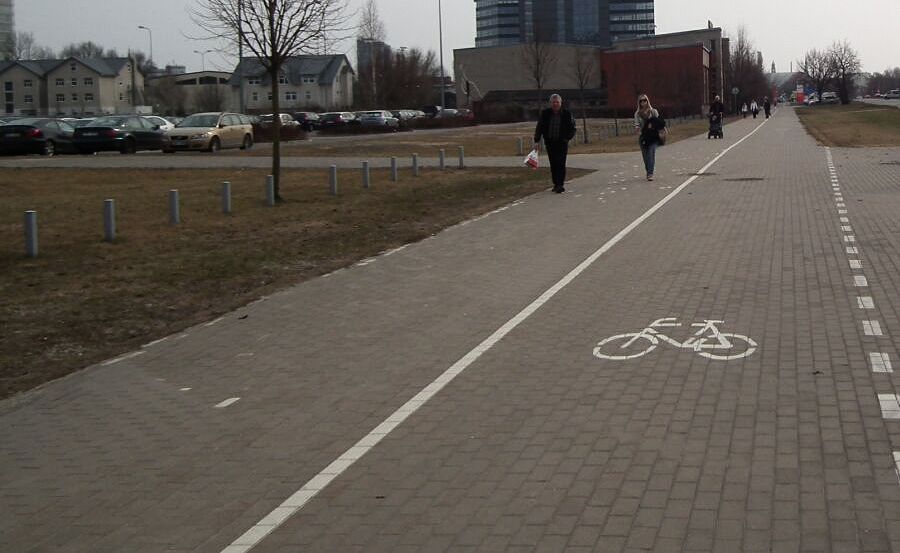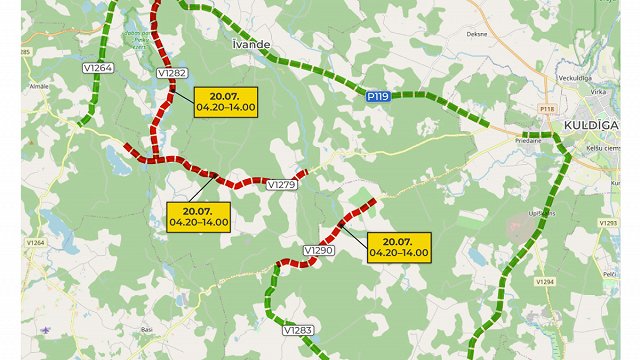Many cities around the world set up temporary bicycle lanes this year to avoid crowded public transportation in the pandemic. In Riga, where the cycling infrastructure is not up to par either way, this plan got stuck between the Transport Department and project designers, until the contract was eventually terminated.
At the end of April, city planners determined the five most important routes where bicycle lanes would be necessary: from the center to Ķengarags, Purvciems, Mārupe, Ziepniekkalns and Sarkandaugava. A month later, the Transport Department concluded an agreement on the development of specific routes.
Viesturs Laurs, street designer in IE.LA inženieri, said the deadline had been set to ten days.
“In my view, [the project] could have been done if there was a mutual understanding of what could be done in that time. But to fully develop designs with high detail and concrete solutions – we realized that it was physically impossible,” said Laurs.
One of the reasons, according to Laurs, is that in the negotiations with the responsible authorities it soon became clear that non-standard solutions and derogations would not be supported.
“We came to the fact that only substantial, long-term lanes can be installed, not some kind of temporary emergency lanes,” he said.
The designers agreed with the city that two out of five routes would be developed in detail. An extension was granted until 6 August, but all agreements have still not been obtained. Laurs said that the need was for an emergency solution, but the agreements were conducted in standard procedure, so not very quickly.
“And of course we are now responsible because we couldn't produce the sketches in time with high level of detail,” said Laurs.
Riga City Council Transport Infrastructure Board representative Mārtiņš Slimbahs said the criticism of responsible authorities is unfounded.
“The department, on its part, was not interested in breaking this agreement – we wanted to draw up documentation as soon as possible to introduce the lanes. We organized meetings with Latvian State Roads and other institutions involved to speed up the process. Unfortunately, we didn't get documentation,” said Slimbahs.
When asked whether the deadline laid down in the agreement was in line with the real requirements, Slimbahs said: the designers knew what they were signing. And their competence is unquestioned. But a contract is a contract:
"The terms of the contract specifically stipulated that the schemes should be drawn up within 10 working days. It is now August 25. For designers, we gave nearly three months in addition to develop these schemes. A strict contract – it was not quite that.”
But why was it not possible to introduce temporary solutions as quickly as in many other cities in Europe? Slimbahs said the department had originally wanted to create bike lanes that could become permanent rather than spend a lot of money on a short-term solution, so it was decided to invest more time.
The traffic department is still thinking about what to do next. It is likely that there will be a new procurement of already existing bicycle lanes in the direction of Ķengarags and Purvciems. Maybe local improvements will be introduced. However, the movement of cyclists between the center and the densely populated areas will be improved no earlier than next year.






























